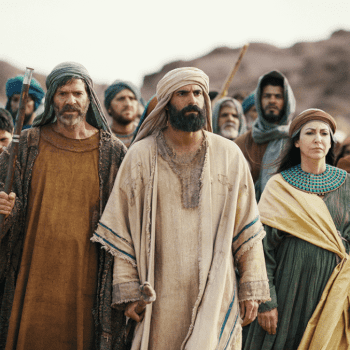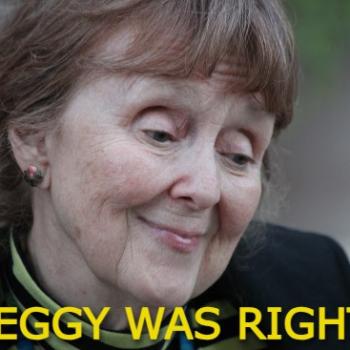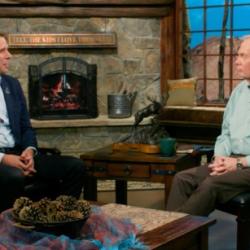It is possible to read certain passages from the Bible in a way that suggests they “teach” a geocentric model of the universe.
It is also possible to read those same passages differently, which is to say to read them in a way that does not suggest that they “teach” a geocentric model of the universe.
The case for the geocentrist reading is not particularly strong. It requires, among other things, a disregard for genre and literary context in which the reader treats one kind of text as though it were another kind of text — much like if one were to read a novel as though it were a newspaper, or a newspaper as though it were a novel.

But never mind that for now. For the sake of argument, let’s just pretend that both readings seem equally plausible. Let’s say that the case for a geocentric reading of those Bible passages is just exactly as strong as the case for a reading that does not teach geocentrism.
How then should a reader decide between two such equally plausible possible readings?
The answer is to put down the Bible and pick up a telescope, or an astronomy textbook. The text itself may allow for two possible readings, but the telescope and the astronomy textbook do not.
This is a fact: the geocentric model of the universe is not true.
That fact must inform our choice between the two possible readings of those biblical passages. Yes, one way to read those passages suggests a geocentrist teaching. But another way to read those passages does not. Given that geocentrism is, in fact, not true, it makes more sense to prefer the non-geocentrist reading.
To prefer the geocentrist reading despite the fact that we know geocentrism is false would be to create an unnecessary and artificial conflict between the Bible and reality, forcing readers to choose between the two.
To prefer the non-geocentrist reading allows readers to embrace both. And this choice does nothing to influence doctrine or the substance of Christian teaching — unless, that is, we have made some previous mistake in such teaching by building doctrine on top of a geocentrist foundation. If we have made such mistakes in the past, this is an opportunity to correct them and to rebuild such doctrines on a firmer foundation, one based on truth rather than on the quicksand of falsehood.
– – – – – – – – – – – –
It is possible to read certain passages from the Bible in a way that suggests they “teach” a historical Adam and Eve.
It is also possible to read those same passages differently, which is to say to read them in a way that does not suggest a historical Adam and Eve.
The case for the reading teaching a historical Adam and Eve is not particularly strong. It requires, among other things, a disregard for genre and literary context in which the reader treats one kind of text as though it were another kind of text — much like if one were to read a novel as though it were a newspaper, or a newspaper as though it were a novel.
But never mind that for now. For the sake of argument, let’s just pretend that both readings seem equally plausible. Let’s say that the case for a historical-Adam reading of those Bible passages is just exactly as strong as the case for a reading that does not teach a historical Adam.
How then should a reader decide between two such equally plausible possible readings?
The answer is to put down the Bible and pick up a microscope, or a biology textbook. The text itself may allow for two possible readings, but the microscope and the biology textbook do not.
This is a fact: the idea of a historical Adam and Eve is not true.
That fact must inform our choice between the two possible readings of those biblical passages. Yes, one way to read those passages suggests a historical Adam and Eve. But another way to read those passages does not. Given that the idea of a historical Adam is, in fact, not true, it makes more sense to prefer the other reading.
To prefer the historical-Adam reading despite the fact that we know it is false would be to create an unnecessary and artificial conflict between the Bible and reality, forcing readers to choose between the two.
To prefer the non-historical Adam reading allows readers to embrace both. And this choice does nothing to influence doctrine or the substance of Christian teaching — unless, that is, we have made some previous mistake in such teaching by building doctrine on top of a foundation requiring the existence of a historical Adam. If we have made such mistakes in the past, this is an opportunity to correct them and to rebuild such doctrines on a firmer foundation, one based on truth rather than on the quicksand of falsehood.















